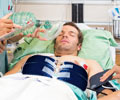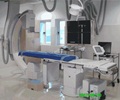A regional system to lower the temperature of sudden cardiac arrest patients improved outcomes, reveals study.

"We've shown that a fully integrated system of care, from EMS through hospital discharge, can provide this essential therapy to victims of out-of-hospital cardiac arrest across a broad geographic region," said Michael Mooney, M.D., the study's lead author and director of the therapeutic hypothermia program at Minneapolis Heart Institute, where the protocol was developed.
Researchers tracked 140 patients who suffered out-of-hospital cardiac arrest between February 2006 and August 2009. Although their heartbeat and circulation were restored within an hour of collapse, they remained unresponsive.
Ice packs were used to begin the cooling process, which started during initial EMS transport to the hospital and in the emergency departments of the network hospitals. One hundred forty patients were admitted to Abbott Northwestern Hospitals for therapeutic hypothermia and re-warming 107 of those were transferred from other hospitals.
Over three to four hours, the patients' core body temperature was lowered to about 92 degrees Fahrenheit and maintained at that temperature for about 24 hours.
Over the next eight hours, physicians gradually re-warmed them to a normal temperature.
Advertisement
- Among the 56 percent of patients who survived to hospital discharge, 92 percent had positive neurological scores, indicating no severe disability. Prior to the protocol, about 77 percent of similar patients had positive neurologic scores.
- The risk of death rose 20 percent for each hour of delay between the return of spontaneous circulation and cooling.
- Survival rates were comparable between patients who were transferred for care within the network and those who were not.
"What our data show is if you have a cardiac arrest 200 miles away or on our doorstep, the quality of the outcomes is identical," Mooney said.About 300,000 out-of-hospital cardiac arrests occur in the United States each year and most are fatal, according to the American Heart Association.
Advertisement
Therapeutic hypothermia blunts the damage that can occur in the 16-hour window after bloodflow is restored. The American Heart Association and other experts recommend therapeutic hypothermia, but U.S. cardiologists have been slow to use it.
The efficiencies of the area's existing network, transfer agreements and working relationships between the EMS departments, network hospitals and the central hospital helped Mooney and his colleagues implement the protocol.
About half of all patients received therapeutic hypothermia while also being treated for a severe form of heart attack (ST-elevation myocardial infarction) in the catheterization lab, said Barbara Unger, R.N., co-author of the study and director of cardiovascular emergency program development for the Minneapolis Heart Institute.
The average age of patients in the study was 62 and 77 percent were men. Older patients fared slightly worse neurologically, the study found.
Source-Eurekalert















